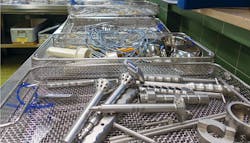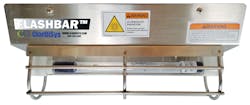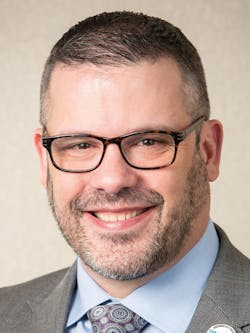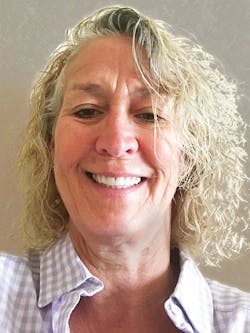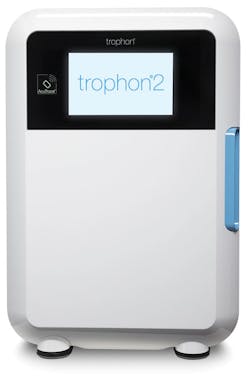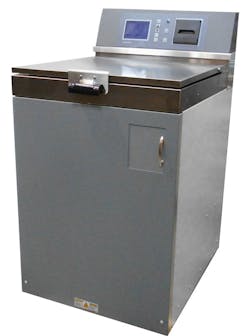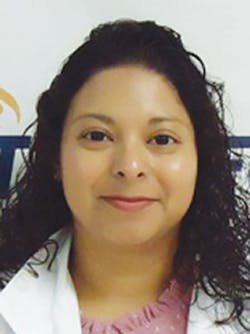While healthcare has followed the Spaulding classification system to determine the required level of processing for medical devices for decades, infection outbreaks related to contaminated devices, most notably endoscopes, have prompted hospitals, manufacturers, regulators and industry associations to reevaluate the processing of reusable medical equipment.
One question that arises: Should central sterile/sterile processing department (CS/SPD) professionals sterilize every medical device that can be sterilized according to their manufacturers’ instructions for use (IFU) even if high-level disinfection (HLD) is an option?
Skeptics to this approach say the focus should not be on whether the device is processed using HLD or sterilization, but on whether it is cleaned properly, because even if the device is sterilized it is not sterile if it isn’t clean.
Other challenges to the “sterilize everything” approach include a department’s capabilities for sterilization of heat or moisture sensitive devices, the safety of certain low temperature sterilization modalities (e.g. ethylene oxide), and the length of time it takes for the CS/SPD to process devices via sterilization compared with HLD.
The Spaulding Classification
The Spaulding Classification categorizes medical devices based on their risk of infection to help determine what level of disinfection or sterilization is required to render them safe for reuse. The American Society for Gastrointestinal Endoscopy’s (ASGE) Multisociety guideline on reprocessing flexible GI endoscopes: 2016 update describes the three classes as follows:1
- Critical: A device that enters normally sterile tissue or the vascular system. Such devices should be sterilized, defined as the destruction of all microbial life. Examples include endoscopes used in sterile settings such as laparoscopic endoscopy and endoscopic accessories such as biopsy forceps and sphincterotomes.
- Semi-critical: A device that comes into contact with intact mucous membranes and does not ordinarily penetrate sterile tissue. These devices (e.g. GI endoscopes) should receive at least high-level disinfection (HLD), defined as the destruction of all vegetative microorganisms, mycobacteria, small or nonlipid viruses, medium or lipid viruses, fungal spores, and some, but not all, bacterial spores.
- Non-critical: Devices that do not ordinarily touch the patient or touch only intact skin, such as stethoscopes or patient carts. These items may be cleaned by low-level disinfection.
“Issues on determining whether high-level disinfection or sterilization is appropriate are many times based off the intended application,” said Emily Lorcheim, Brand Manager for ClorDiSys. “Disinfection is defined as a 99.99% to 99.999% level of kill, whereas sterilization is the elimination of all organisms and results in a 99.9999%, or 6-log sporicidal reduction. Sterilization is required in healthcare for applications such as implantable medical devices, or if there is a major occurrence of a significant disease.”
“High-level disinfection is key on items that should be rid of organisms often, due to frequent human contact and therefore potential contamination,” Lorcheim added. “These items can include cell phones, tablets, office supplies, remotes, etc. Another opportunity where measures of high-level disinfection can be utilized is on external medical equipment that either cannot be easily cleaned due to size restraints or being fixed in position, or cannot be treated with certain sterilizing chemicals or conditions. Methods may cause material damages, especially liquid methods, which may be corrosive or leave residues.”
Many flexible endoscopes fall into the semi-critical category because they typically do not penetrate sterile tissue. But in recent years, highly complex endoscopes, such as duodenoscopes, have been linked to infectious disease outbreaks as the device retains dangerous bacteria from one patient, even after the recommended processing, and this bacteria is spread to the next patient on which the scope is used. As the ASGE Multisociety guideline states:
“Most recently, reports in both the medical literature and general media have identified clusters of transmission of multidrug-resistant organisms during endoscopy with side-viewing duodenoscopes using mechanical elevators for device manipulation. In contrast to prior episodes of transmission, these outbreaks occurred despite apparently appropriate cleaning and HLD.”1
“Both liquid chemical and gas sterilants are required to be sporicidal under the labeled use conditions. Not so for a high level disinfectant,” said Dr. Nancy Robinson, Distinguished Scientist, STERIS. “Therefore, sterilization offers a clear advantage over high-level disinfection when reprocessing devices traditionally characterized as semi-critical.”
“Comparing liquid chemical versus gas sterilization processes, liquid chemical sterilization offers the advantage of fast cycle time: As short as 18 minutes and the devices do not need to be dry prior to processing,” Robinson added.
To disinfect or sterilize?
“Our healthcare facility uses an array of processes to clean, disinfect and sterilize surgical equipment and instrumentation,” said Chris Franklin, CRCST, CIS, CFER, Owner, The SPD Network, Endo Tech, IU Health. “This includes chemical high-level disinfection, steam sterilization, hydrogen peroxide gas plasma sterilization and ethylene oxide (EtO) sterilization.”
But as Berg points out, the endoscope that the CS/SPD has processed as a semi-critical device, one that does not penetrate sterile tissue, using HLD as specified by the Spaulding Classification, could potentially be used more invasively. There is typically a knowledge gap between CS/SPD and the clinician performing the procedure as to how the scope will be used and whether it has been processed as a semi-critical or critical device.
“There are cases when the doctor who is performing an evaluation of the stomach sees something that warrants him or her to get a little more invasive with the scope,” said Berg. “Under the Spaulding Classification, that could require a sterile scope because of crossing the mucosal barrier. But typically, the doctor does not know whether the scope in his or her hand was processed with HLD or underwent sterilization. That is where the push and confusion is. The push is to get everything sterile because we don’t know how it will be used. And that is a very valid point for all involved.”
Manufacturer IFUs
It is important to note that the decision to use HLD or sterilization when processing a scope or other device ultimately comes down to what the device’s manufacturer has specified in its instructions for use (IFU).
“One thing I would like to point out is that with the recent media coverage on endoscopes I have seen a lot of hospitals switch to EtO or another form of sterilization to reduce the risk further for the patient. However what we must remember is that the endoscope manufacturer does not specify that you can do both - HLD followed by sterilization,” said Garry Bassi, BSc, CMDRT, Director, Medical Device Reprocessing Department, Mount Sinai Hospital, Toronto. “This deviates from the manufacturer’s instructions for use and will increase material degradation on your scope. Either you wash the scope and perform HLD and then store the scope to dry, or you wash the scope and perform sterilization and store the scope.”
Impact on workflow
Another consideration in the HLD versus sterilization debate is how the chosen modality will impact the CS/SPD’s workflow. Most CS/SPDs have limited time and staff resources to manage an ever-increasing volume of cases performed with increasingly complex instrumentation that is challenging and time-consuming to process. If there is the question of switching from HLD to sterilization for any given device, the department must consider the potential ramifications.
“Our patients are not decreasing and the procedures are continuing to grow and become more complex. Evaluating a modality that takes a fixed amount of time to produce it safely, you must determine whether that time commitment is feasible for your department,” said Berg. “And even if suppliers introduce a faster sterilizer, faster biologic or some other type of product, that doesn’t necessarily mean we can do it faster in our department. There is a push to do it fast but the focus should be do we have enough time and training to do it right!”
“Many times sterilization methods require long exposure times, harsh chemicals, sealing spaces off or separate chambers,” said Lorcheim. “There are various other factors as well, but many of these methods are not conducive to the fast-paced environment of the healthcare setting. High-level disinfection can be applied in a variety of methods, quickly, easily and effectively to maintain a safe healthcare environment while still maintaining a realistic working and living environment for those within it.”
Where processing takes place
When evaluating instrument or device processing, a healthcare facility must take into account where these items will be disinfected or sterilized, because not all processing takes place in the CS/SPD.
“It is an interesting space, because most ultrasound probes are processed in the departments in which they are used, outside of the CS/SPD,” Dr. Burdach added. “This presents a challenge because of the diverse groups involved in processing.”
“CS/SPD staff members may be consulted in setting up the disinfection processes, but the clinical staff members are usually responsible for performing the processing. The use of automated processors can help reduce human error in these settings and CS/SPD leadership have an important role in providing training and support to the clinical departments.”
Staff safety
CS/SPD professionals use HLD or sterilization to kill dangerous microorganisms – but what risks do they pose to the users?
“The safety of our employees is of the utmost importance, which is why all necessary precautions are taken to ensure their wellbeing,” said Franklin. “Employees that operate EtO sterilizers are monitored for exposure and access to the area is limited. All instruments are processed according to manufacturer’s recommendations and while we would prefer to sterilize much of our instrumentation, items that cannot tolerate certain processes or have not been validated for sterilization are disinfected using HLD.”
“Medical device standards bodies recognize that not all devices are the same and require specific cleaning and disinfection processes to establish safe reuse,” said Radford. “Some typical high-level disinfection processes require the use of chemical disinfectant solutions, which require personal protection, air handling systems and other precautions to avoid posing risks for users and patients. Whether departments use sterilization or high-level disinfection, infection management processes also require strict process controls to eliminate human error.”
The Cenorin 610 Washer-Pasteurizer/High Level Disinfector is designed for cleaning and high-level disinfection of reusable semi-critical and non-critical medical devices such as those used for anesthesia, pulmonary procedures, sleep labs and respiratory care. It is FDA cleared and meets FDA bactericidal standards for HLD. The 610 system is fully automated and provides a record of each cleaning and disinfection cycle. Requiring only water and heat, this system eliminates the need for chemicals and their required user and patient protections. It is also an environmentally sensitive alternative since it discharges only water and nontoxic effluents into the medical waste stream.
Cleaning is critical
Regardless of the modality – HLD or sterilization – a device won’t be safe for use unless it has been properly cleaned according to the manufacturer’s IFU.
“The FDA has done studies of trained individuals processing devices following the manufacturers IFUs to the letter, and after that cleaning they culture the scopes and still get some positive results for contamination,” said Berg. “I don’t want to see people using the science of sterilization to say ‘I have a safe product.’ We need to ensure the cleaning is effective and it can be successfully reproduced before we have the sterilization conversation.”
“Sterilization reduces risk but does not remove the risk,” said Bassi. “If the scope is not clean it cannot be sterilized, and some studies have shown the scope to still have bacteria after sterilization – therefore we need to closely look at what our solution is going to be as the problem stems from the complexity around cleaning the device. If intricate devices with robotics and mechanical mechanisms cannot be cleaned effectively by the cleaning equipment we have today then perhaps we need to strike a balance between reusable and disposable.”
Manufacturer support of the CS/SPD
“As a sterile processing technician I believe every technician should know about all the options they have when disinfecting or sterilizing a medical device,” said Gutierrez. “One can never know what can happen in the operating room that can warrant the use of a HLD rather than sterilization. For awhile now HLD and some forms of sterilization such as EtO have received such a bad rap and thus some hospitals have gone away from certain chemical processes not realizing if used properly can be more effective in killing microorganisms or can even save reprocessing time. In fact, I have noticed most manufacturers don’t even include EtO instructions in their IFUs any longer.”
Gutierrez says the Spaulding Classification system should be used as a guide, and CS/SPD professionals should take other factors into consideration when determining whether a device requires HLD or sterilization, such as what types of microorganisms may be present on the device and whether or not the chemistry will kill a certain type of microorganism.
“As technicians we all have received heavily soiled instruments that have undergone ‘mucous membrane’ procedures that arrive into decontamination in pretty questionable circumstances,” said Gutierrez. “There are times when the manufacturers’ IFUs for these devices will specify HLD, such as some older generation sigmoidoscopes and flexible endoscopes. Sometimes the manufacturer will approve EtO sterilization for the scope but the hospital may not have access to that process and thus use HLD as their only option. At the end of the day, having more options in the form of sterilization is always a better solution than HLD in my opinion.”
Berg says manufacturers must engage with CS/SPD professionals when developing new devices to ensure they can be effectively processed under real-world conditions. He states: “I am engaging with pretty much all of the major manufacturers advising them that before they make a product, during the product design and development phase, they must listen to the voice of the sterile processing profession. They are making the product for a clinician and patient, and that’s great. But they need to look at the sterile processing side of the cleaning and disinfection/sterilization of that product not just the clinical need.”
Hospital support of the CS/SPD
In addition to manufacturer support, hospitals and their leadership must also support the CS/SPD through investments in technology, human capital and training, said Berg, stating: “Manufacturer IFUs are confusing enough, combined with the surgery/procedure schedule and the increasing needs of patients, they are only becoming more of a challenge for the reprocessing department. Technology, whether it is a scope or anything else we need to process, is getting more complex yet hospitals are struggling to keep up with the investment in the people, giving the time and resources necessary to effectively do their jobs.”
“All methods of microbial inactivation have some risk to them so it is imperative that staff be thoroughly trained with competencies verified initially and annually, on the use of any chemicals or sterilization methods in use,” said Chobin. “Sterilization is not a given, there are multiple steps and if even one step is not performed correctly, the entire process can be negated.”
Another way that hospitals must support their CS/SPDs is to include them in the product evaluation process. That way, the hospital will not procure a device that the CS/SPD does not have the resources to safely and effectively process.
“I am operational manager of two large facilities in Colorado and I have had a product hit my department that I can’t process or I can but it would have a major negative impact on CS/SPD workflow,” said Berg. “That’s why it is important to have relationships with clinical and purchasing counterparts so when someone is buying something then we (CS/SPD) will have the opportunity to research the processing requirements prior to purchase.”
Berg adds that manufacturers can play a role in this as well through a willingness to re-validate their products if a hospital does not have the HLD or sterilization modality specified in their IFU.
“I had an ER surgeon once request a product that required EtO sterilization and we did not have that method,” said Berg. “I responded by saying that I was more than happy to process the device but this manufacturer doesn’t want me to do it with what I have here. So the surgeon called the company and asked if it would revalidate the product with the modality we had, or else he would select a different manufacturer’s product. The manufacturer agreed to revalidate and the surgeon was able to use this specific product.
“We don’t ever want to say no to a product that could save a life, but we also don’t want to hurt a life by agreeing to a product that is too challenging to clean or for which we don’t have the necessary technology to process.”
Reference
1. Multisociety guideline on reprocessing flexible GI endoscopes: 2016 update: https://www.asge.org/docs/default-source/importfiles/publications_and_products/practice_guidelines/doc-multisociety-guideline-on-reprocessing-flexible-gastrointestinal.pdf
One hospital’s sterilization story

Casey Stanislaus Czarnowski, BA, CRCST, CIS, CER, Sterile Processing Educator, Stanford Health Care, helped to facilitate a complete turnover of a previous hospital’s endoscopes from HLD to sterilization, with the exception of gastroscopes and colonoscopes, to improve standard of care.
“We wanted to sterilize everything we could – anything the manufacturer told us we could render sterile. Even if is was not necessarily for a sterile procedure, we wanted to sterilize it,” said Czarnowski.
Czarnowski said the greatest lesson learned during the process was that provider engagement was critical to its success. The team engaged with providers at the onset of the project, and together convinced the hospital’s leadership that the required investment to switch from HLD to sterilization of scopes was important to patient care and safety.
Another major consideration was transport and storage. Because the scopes are used throughout the hospital and stored in various places outside of the CS/SPD, the transition team had to ensure they were protected from potential contamination. They switched to rigid containers and coordinated with service line leaders to make sure they understood the proper way of storing sterile instruments. This meant having the right shelving and atmospheric conditions. Because scopes are also used on traveling carts, the team had to also stress the importance of getting these carts back to the CS/SPD in a timely manner so that the scopes could be sterilized and ready for subsequent cases.
The final consideration, which Czarnowski stresses as most important, was training on point of use scope cleaning. As he explains, regardless of how a scope is processed, the IFUs of the scopes required that they be pre-cleaned at point of use. Czarnowski and his team took this as an opportunity to perform a facility-wide training.
“Anyone who touches a scope got new training or retraining on point of use care, including how to pre-clean a scope before sending it back to sterile processing,” said Czarnowski. “That was a big advantage for us because we had the opportunity to speak with folks who use these scopes, including some we had never engaged with before, to demonstrate the proper way to care for them.”
Mount Sinai Hospital’s switch from EtO
Mount Sinai Hospital in Toronto made the decision to consolidate its sterilization methodologies from three down to two, eliminating its use of ethylene oxide (EtO), and using only high temperature steam and low temperature hydrogen peroxide sterilization. The hospital also uses the following disinfection modalities:
- Chemical high-level disinfection (HLD)
- Manual HLD – Oxidative chemistry based using accelerated hydrogen peroxide
- Automatic HLD – Use of an automatic endoscope reprocessor (AER) with aldehyde free, liquid chemical germicide formed of acetic acid, hydrogen peroxide and peracetic acid
- Thermal disinfection – Using automatic washer disinfectors
“There was a variety of reasons behind our decision: EtO is being discontinued by the current vendor, recent news in the state of California, other documents which question its safety and it was inefficient for us to have three types of sterilization modalities for such little volume (more efficient to maintain and operate two modalities than three),” said said Garry Bassi, BSc, CMDRT, Director, Medical Device Reprocessing Department.
According to Bassi, they upgraded their medical devices that were incompatible with hydrogen peroxide sterilization and performed preventative maintenance on devices before switching over to prevent any failures from occurring. In doing so, they went from 70 loads per month of EtO to 0.
Bassi and his team also made the switch from aldehyde-based to oxidative-based chemistry using hydrogen peroxide for their manual HLD processes to standardize their chemistry across the board.
“We use hospital approved disinfection wipes for surface disinfection, which are based on the active ingredient of hydrogen peroxide, so it only made sense to standardize to oxidative hydrogen peroxide based chemistry for consistency in reprocessing from low-level disinfection to high-level disinfection,” said Bassi. “We also found that aldehyde chemistry must be neutralized before it can be disposed of safely, so eliminating the need for neutralization prior to disposable was another win for us.”
EtO pros and cons
Ethylene oxide (EtO) is an effective, low temperature method of sterilization for heat and moisture sensitive devices, including flexible endoscopes. According to the U.S. Food and Drug Administration (FDA), about fifty percent of all sterile medical devices in the U.S. are sterilized with ethylene oxide.1 But the properties that make EtO such a great method of sterilization – its ability to kill – also present potential safety risks with its use.
Recent media reports have highlighted forced EtO sterilization plant shut downs in Georgia and Illinois because of elevated carcinogenic gas emissions in surrounding communities. Illinois House Bill 3888 seeks to phase out ethylene oxide emissions in the state, “preventing any sterilization company within five miles of a region with a population density of at least 10 residents per square mile, or within the same distance from a school or day care.” Hospitals would need to meet the same requirement by January 2022, and critical access hospitals by 2025.2
“EtO has been around for a long time and has gotten a bad rap over the years,” said Damien Berg, Regional Manager of Sterile Processing at UCHealth and Immediate Past President of IAHCSMM, and AAMI voting member and co-chair for several committees. “The lethality is amazing and its compatibility with materials is great. It does its job very well. The downside is its toxicity but that is what makes it a good sterilizer. Because of the toxicity the hospitals have to comply with regulatory requirements to keep their employees safe.”
“Another downside is its long aeration time,” Berg added. “EtO is not bad but do your due diligence and determine if it fits your needs based off your hospital’s workflow and the products you need to sterilize.”
Anna R. Gutierrez, AA, CRCST, CSPDT, CIS, CFER, Sterile Processing Educator/Advocate, Sterile Processing Program Director at Fortis College, describes her recent visit to a manufacturing vendor that supplies basin sets and OR packs using inactive EtO. She says trained sterile processing technicians first assembled trays, kits and packs, bagged them, and then took them to a separate room where they were sealed similar to a peel pouch.
During the sealing process, most of the air was vacuumed out and minute amounts of inactive EtO were drawn into the bag making the sealing process safe for the technician to handle. The packages were then placed onto a cart and rolled into a warm incubating chamber where the EtO was activated inside of the bag. The packages remained there for a certain amount of time to fully sterilize all items inside of the specially designed bags and were then quarantined until biological and chemical indicators read negative.
“I was impressed,” said Gutierrez. There were so many questions during my visit but I have to say it was one of my most interesting experiences I had experienced. The manufacturer did undergo a premarket approval (PMA) clearing with the FDA and of course there is so much more to learn of this process.”
“Ethylene oxide is not the only option for sterilizing heat or moisture sensitive semi-critical devices of concern,” said Dr. Nancy Robinson, Distinguished Scientist, STERIS. “Vaporized hydrogen peroxide sterilizers, such as the V-PRO Low Temperature Sterilization Systems, are used to sterilize hysteroscopes, epiduroscopes, neuroscopes, choledochoscopes, ureteroscopes, bronchoscopes, ureteroscopes, naso-pharyngo-laryngoscopes, and ultrasound transducers in less than 38 minutes.”
“The sterilized devices can be used immediately or may be stored prior to their next use,” Robinson added. “The approximately 40 minute cycle time is much closer to that of a HLD system as compared to the very long cycle time for ethylene oxide sterilizers.”
1. Ethylene Oxide Sterilization for Medical Devices, FDA, https://www.fda.gov/medical-devices/general-hospital-devices-and-supplies/ethylene-oxide-sterilization-medical-devices
2. Legislators unveil bill to keep ethylene oxide emissions away from ‘densely populated regions’, The State Journal-Register, September 13, 2019. https://www.sj-r.com/news/20190913/legislators-unveil-bill-to-keep-ethylene-oxide-emissions-away-from-densely-populated-regions
About the Author
Kara Nadeau
Senior Contributing Editor
Kara Nadeau is Sterile Processing Editor for Healthcare Purchasing News.
